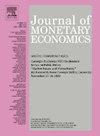中央银行与货币政策的运作框架
IF 4.1
2区 经济学
Q1 BUSINESS, FINANCE
引用次数: 0
摘要
我们分析了中央银行数字货币(CBDC)对货币政策操作框架和宏观经济的影响。我们建立了一个新凯恩斯主义模型,该模型具有摩擦性银行间市场、中央银行存贷便利和家庭对不同流动资产的偏好,并以欧元区为校准对象。采用 CBDC 意味着银行存款萎缩,而存款萎缩会被准备金的下降所吸收,如果准备金下降幅度足够大,则会增加对中央银行信贷的依赖。因此,操作框架的变化(从 "下限 "到 "走廊",再到 "上限")决定了 CBDC 对信贷、投资和产出的影响。本文章由计算机程序翻译,如有差异,请以英文原文为准。
CBDC and the operational framework of monetary policy
We analyze the impact of central bank digital currency (CBDC) on the operational framework of monetary policy and the macroeconomy. We develop a New-Keynesian model with a frictional interbank market, central bank deposit and lending facilities, and household preferences for different liquid assets, calibrated to the euro area. CBDC adoption implies a contraction in bank deposits, which is absorbed by a fall in reserves and, if large enough, increased recourse to central bank credit. The resulting changes in the operational framework (from ‘floor’ to ‘corridor’, and then to ‘ceiling’) thus shape the impact of CBDC on credit, investment and output.
求助全文
通过发布文献求助,成功后即可免费获取论文全文。
去求助
来源期刊

Journal of Monetary Economics
Multiple-
CiteScore
7.20
自引率
4.90%
发文量
90
审稿时长
74 days
期刊介绍:
The profession has witnessed over the past twenty years a remarkable expansion of research activities bearing on problems in the broader field of monetary economics. The strong interest in monetary analysis has been increasingly matched in recent years by the growing attention to the working and structure of financial institutions. The role of various institutional arrangements, the consequences of specific changes in banking structure and the welfare aspects of structural policies have attracted an increasing interest in the profession. There has also been a growing attention to the operation of credit markets and to various aspects in the behavior of rates of return on assets. The Journal of Monetary Economics provides a specialized forum for the publication of this research.
 求助内容:
求助内容: 应助结果提醒方式:
应助结果提醒方式:


